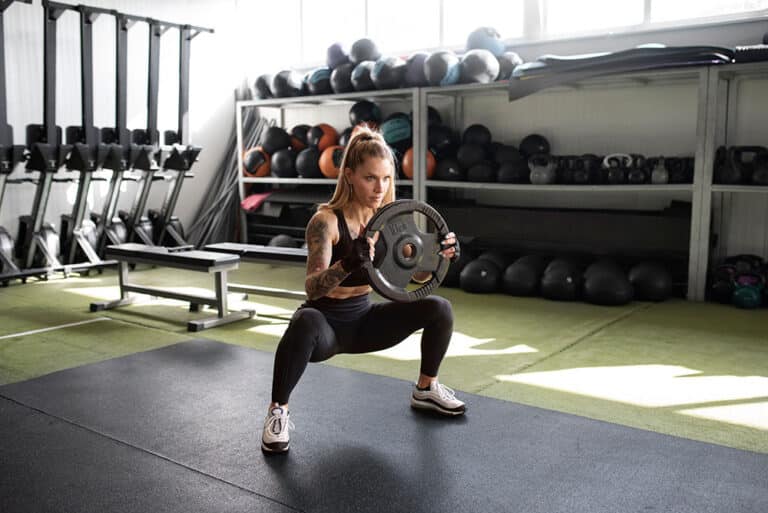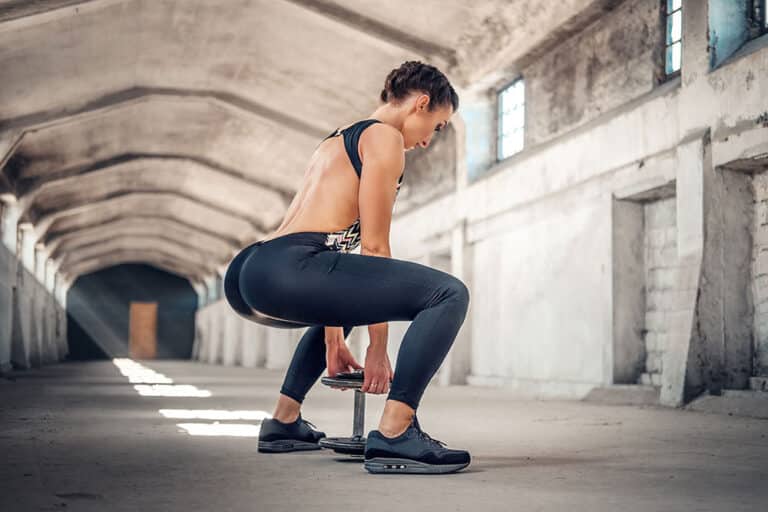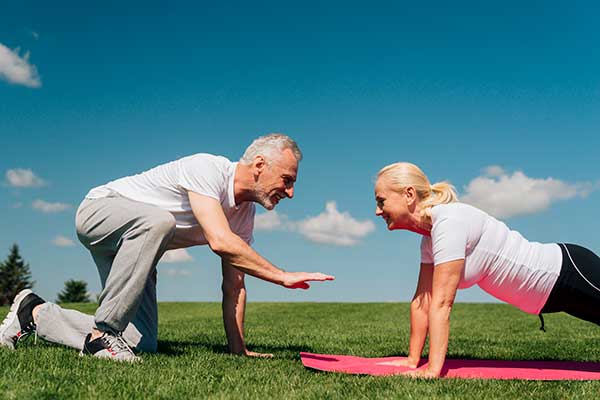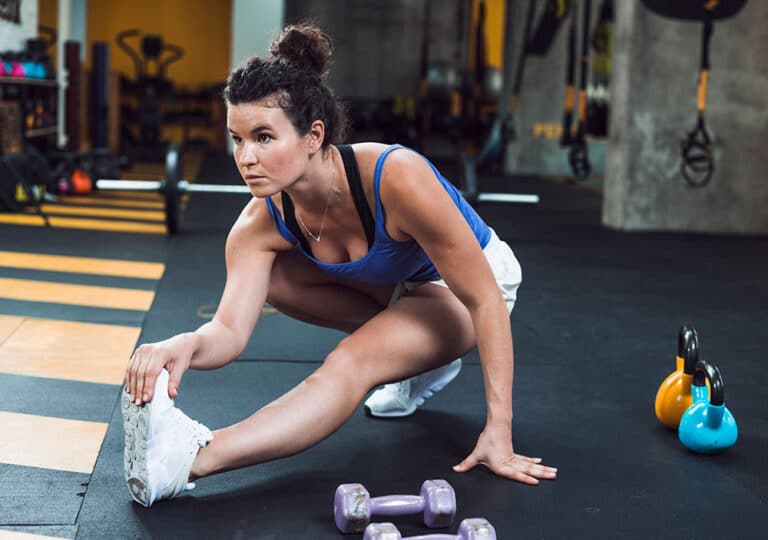Benefits of Lunges
Weight Loss Benefits
Lunges are a powerful exercise for those looking to shed excess weight. By working the large muscle groups in the lower body, lunges help build lean muscle and reduce body fat, resulting in an increased resting metabolism. This leads to more calories being burned, even when at rest, which is essential for weight loss (Healthline).
| Exercise | Muscles Targeted | Calories Burned (30 min) |
|---|---|---|
| Forward Lunges | Quadriceps, Glutes, Hamstrings | 200 |
| Plyometric Jump Lunges | Quadriceps, Glutes, Hamstrings, Calves | 250 |
For those starting with lunges, it’s essential to ensure proper form to maximize benefits and prevent injury. If you’re looking to diversify your routine, explore our bodyweight leg challenge.
Balance and Stability Improvement
Lunges are a unilateral exercise, meaning they work one side of the body independently from the other. This aspect is crucial for developing balance, coordination, and stability. Each lunge activates stabilizing muscles in the core and lower body, contributing to overall better movement and reducing the risk of falls (Healthline).
Additionally, by strengthening the core and back muscles, lunges promote better posture, helping individuals stand taller and move with more confidence.
For those who struggle with balance or are new to lunges, starting with simpler variations such as bodyweight lunges is advisable. For further challenges and variety, check out our section on wall exercises for legs.
Incorporate lunges into your exercise routine to leverage these benefits and improve overall physical health.
Muscle Groups Targeted
Lunges are an essential leg exercise that effectively target multiple muscle groups, promoting strength, balance, and stability. Understanding the specific muscles involved and the types of contractions that occur can help maximize their benefits.
Quadriceps, Glutes, Hamstrings
Lunges primarily engage the quadriceps, gluteals, and hamstrings. When performing a lunge, these muscles work together to ensure proper movement and support. Here’s a brief overview of each muscle group’s role:
- Quadriceps: The quadriceps, located at the front of the thigh, are heavily engaged during lunges. They are responsible for extending the knee and providing stability.
- Glutes: The gluteal muscles, especially the gluteus maximus, play a crucial role in lunges. They are responsible for hip extension and maintaining balance.
- Hamstrings: The hamstrings, situated at the back of the thigh, are involved in both knee flexion and hip extension. They work alongside the glutes to control movement.
| Muscle Group | Primary Action |
|---|---|
| Quadriceps | Knee Extension |
| Glutes | Hip Extension |
| Hamstrings | Knee Flexion and Hip Extension |
Regardless of the lunge variation used, the leg positioned in front experiences greater muscle activation compared to the hind leg, emphasizing the importance of proper form in maximizing muscle engagement (Verywell Health).
Concentric and Eccentric Contractions
Lunges involve both concentric and eccentric muscle contractions. Understanding the difference between these contractions can shed light on how lunges work to build muscle:
- Concentric Contraction: This occurs when the muscle shortens as it contracts. In lunges, the concentric phase happens as you push up from the lunge position, shortening the quadriceps and glutes.
- Eccentric Contraction: This occurs when the muscle lengthens while under tension. During lunges, the eccentric phase happens as you lower yourself into the lunge, lengthening the quadriceps, hamstrings, and glutes.
Research suggests that eccentric muscle contraction in lunges is more effective than concentric muscle contraction when it comes to hypertrophy and muscle size (Healthline). This means that focusing on the lowering phase of the lunge can contribute significantly to muscle growth.
After performing lunges, muscle soreness can be expected, typically peaking within the first 24 to 48 hours post-exercise due to cellular waste product buildup or microscopic tearing in muscle fibers, which leads to muscle inflammation (Verywell Health).
To further explore lunge variations and how they can benefit your leg workout routine, consider reading articles like how to do bodyweight squats or exploring other bodyweight lunge variations.
Specific Muscle Work
Gluteal, Quadriceps, Hamstring Focus
Lunges are a powerhouse exercise that effectively target the gluteals, quadriceps, and hamstrings. These muscles play a key role in both the lengthening (eccentric) and contracting (concentric) phases of the lunge movement. According to Healthline, lunges excel at engaging these muscle groups, making them a valuable addition to any fitness routine for strength and muscle activation.
| Muscle Group | Eccentric Phase | Concentric Phase |
|---|---|---|
| Gluteals | Lengthen | Contract |
| Quadriceps | Lengthen | Contract |
| Hamstrings | Lengthen | Contract |
Performing lunges with proper technique ensures that these muscle groups are effectively activated. This not only enhances strength and stability but also contributes to muscle toning and definition. For guidance on proper form, explore our how to do bodyweight squats article.
Unilateral Exercise Benefits
Lunges are a unilateral exercise, meaning they work one side of the body at a time. This offers unique benefits compared to bilateral exercises, which work both sides simultaneously. By isolating each leg, lunges help in identifying and correcting muscle imbalances and asymmetries. This can lead to improved overall balance and coordination.
According to Verywell Health, the higher quadriceps and hamstring activation achieved through lunges sets them apart from other leg exercises. This targeted approach makes lunges especially effective for strengthening the lower body.
Unilateral exercises like lunges also engage the core to a greater extent as the body works to stabilize itself during the movement. This contributes to better posture and a stronger, more balanced physique. For additional leg workouts that don’t require weights, check out our article on calf exercises without weights.
| Unilateral Benefits | Description |
|---|---|
| Corrects Imbalances | Targets each leg individually to identify and correct muscle imbalances |
| Enhances Stability | Engages the core and improves balance |
| Better Coordination | Promotes motor skills and coordination by isolating movements |
Integrating lunges into your training regimen can yield significant improvements in strength, stability, and muscle balance. Whether you’re performing [bodyweight lunge variations] or more advanced forms, lunges offer numerous benefits to strengthen and tone your legs effectively. For more tips, visit our articles on quick leg workout no equipment and morning leg exercises.
Importance of Lunges
Lunges are a fundamental exercise for anyone looking to strengthen their legs. They offer numerous benefits related to balance, stability, joint health, and muscle activation.
Balance and Stability Benefits
Lunges significantly enhance balance and stability due to their unilateral nature, meaning they work each side of the body independently. This makes them a valuable exercise for improving coordination and developing the stabilizing muscles. Studies show that a protocol of lunges can significantly improve balance and reduce the risk of falling, particularly in middle-aged individuals. By assessing imbalances and weaknesses in the body structure, lunges help to create a more stable and balanced physique.
| Benefit | Description |
|---|---|
| Balance Improvement | Enhances overall coordination and reduces the risk of falls |
| Stability Improvement | Engages stabilizing muscles, enhancing overall stability |
| Correction of Imbalance | Identifies and corrects muscle weaknesses |
For more exercises that can improve balance, check out our article on leg exercises for elderly.
Joint Health and Muscle Activation
Lunges contribute to joint health by promoting flexibility and strength around the knee and hip joints. This exercise engages multiple muscle groups, including the quadriceps, glutes, and hamstrings. Moreover, the leg positioned in front during a lunge experiences greater muscle activation compared to the hind leg, emphasizing proper form to maximize muscle engagement.
Adding weights during lunges increases resistance and helps build more strength. Individuals can use items like dumbbells, barbells, or household objects to intensify the exercise.
| Muscle Group | Activation |
|---|---|
| Quadriceps | High |
| Glutes | High |
| Hamstrings | Moderate |
For more information on protecting your joints while exercising, visit our page on leg exercises for bad knees.
Other bodyweight exercises can also benefit your leg strength and stability, such as [bodyweight leg challenge] and [morning leg exercises]. Explore the best [bodyweight lunge variations] to maintain joint health and muscle activation.
Lunge Variations
Lunges are versatile and highly effective exercises that can be varied to target different muscle groups and provide numerous benefits. Here, we explore two popular lunge variations: forward lunges and plyometric jump lunges.
Forward Lunges
Forward lunges are a classic version that targets the quadriceps, hamstrings, and glutes. They are excellent for building leg strength and improving stability (Muscle and Motion).
How to Perform Forward Lunges:
- Stand upright with feet hip-width apart.
- Take a step forward with one leg, lowering your hips until both knees are bent at approximately a 90-degree angle.
- Keep the front knee directly above the ankle and the back knee hovering just above the ground.
- Push through the heel of the front foot to return to the starting position.
- Repeat on the other side.
Benefits of forward lunges include:
- Improved balance and coordination
- Increased leg strength and muscle activation
- Enhanced flexibility of the hip flexors
| Muscle Group | Primary Targets |
|---|---|
| Quadriceps | Front of the thigh |
| Hamstrings | Back of the thigh |
| Glutes | Buttocks |
For a healthier morning routine, consider checking out [morning leg exercises] to kick start your day.
Plyometric Jump Lunges
Plyometric jump lunges add an explosive jumping motion to the traditional lunge exercise, incorporating plyometric elements that increase lower body strength and cardiovascular endurance (Muscle and Motion).
How to Perform Plyometric Jump Lunges:
- Start in a standing position with feet hip-width apart.
- Step one foot forward into a lunge position, lowering your hips until both knees are bent at approximately a 90-degree angle.
- Explosively jump into the air, switching the position of your legs mid-air.
- Land softly in a lunge position with the opposite leg forward.
- Continue alternating legs with each jump.
Benefits of plyometric jump lunges include:
- Enhanced explosive power
- Improved cardiovascular endurance
- Increased lower body strength
| Metric | Plyometric Jump Lunges |
|---|---|
| Muscle Activation | High |
| Cardiovascular Benefit | High |
| Explosive Power | High |
For more advanced explosive leg exercises, explore our [plyometric exercises for legs] guide.
Both forward lunges and plyometric jump lunges are excellent variations that cater to different fitness goals and levels. Including these lunge variations in your workout routine can aid in developing stronger legs, improving balance, and enhancing overall lower body function. For those interested in non-weighted leg strengthening techniques, also refer to our article on [how to build leg muscle without weights].
Advanced Lunge Variations
Enhancing your leg workout with advanced lunge variations can further develop strength, balance, and endurance. Here are two effective advanced lunge variations for serious fitness enthusiasts.
Slider Lunges
Slider lunges utilize sliders or gliding discs to introduce an additional stability challenge to the traditional lunge exercise. These lunges are excellent for engaging the stabilizer muscles and improving balance.
- How to Do Slider Lunges:
- Place one foot on a slider or gliding disc.
- Slide the foot backward into a lunge position while keeping the front knee aligned with the ankle.
- Return to the starting position by pulling the back foot forward.
- Repeat on the other leg.
Benefits of slider lunges include increased muscle activation, especially in the glutes, quadriceps, and hamstrings. They also enhance core stability due to the balancing required throughout the movement.
| Variation | Primary Muscles Worked | Secondary Muscles Worked | Difficulty Level |
|---|---|---|---|
| Slider Lunges | Quadriceps, Glutes, Hamstrings | Core, Calves | High |
For additional leg exercises that do not require any equipment, explore our article on quick leg workout no equipment.
Dumbbell Lunges
Dumbbell lunges add resistance to the traditional lunge by incorporating weights, thereby increasing the intensity of the exercise and helping to build more muscular strength.
- How to Do Dumbbell Lunges:
- Hold a dumbbell in each hand with your arms at your sides.
- Step forward into a lunge, keeping the back straight and shoulders relaxed.
- Lower your hips until both knees are bent at approximately 90 degrees. Ensure the front knee doesn’t extend past the toes.
- Push back to the starting position and repeat on the other leg.
Adding weights like dumbbells not only enhances the resistance but also engages the entire body, offering a comprehensive workout.
| Variation | Primary Muscles Worked | Secondary Muscles Worked | Difficulty Level |
|---|---|---|---|
| Dumbbell Lunges | Quadriceps, Glutes, Hamstrings | Shoulders, Core | Medium to High |
For techniques on performing squats with body weight alone, check out our guide on how to do bodyweight squats.
Incorporating these advanced lunge variations into your routine can significantly enhance your leg strength and stability. Try out different variations to see which ones work best for you, and always prioritize proper form to avoid injury. Explore more about the benefits of bodyweight exercises with our bodyweight leg challenge.
- About the Author
- Latest Posts
Johnnie D. Jackow Sr., the founder and CEO of Total Body Fitness, Worldwide, has a long-standing career in the fitness industry. He began as a certified personal trainer in the mid-90s and soon after authored his first weight loss book in 1998. This led to the launch of Total Body Fitness, Nationwide in the USA at the same time. Johnnie gained recognition as the fitness guru of his time, running infomercials on local TV late at night in Houston, Texas. Over the years, he has helped more than 40,000 individuals from all over the world achieve their health and fitness goals. With over 60,000 hours of documented training in integrative functional medicine, he completed his PhD in human physiology in 2010. His primary objective is to assist people in reaching their health and fitness goals through alternative approaches rather than relying solely on conventional medicine and pharmaceutical drugs. Today, with almost three decades of experience under his belt, Johnnie continues to be a leader in health and fitness.








